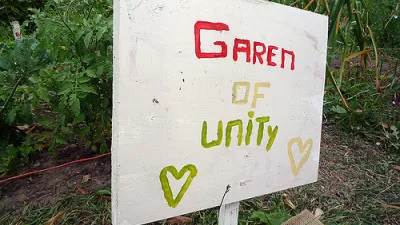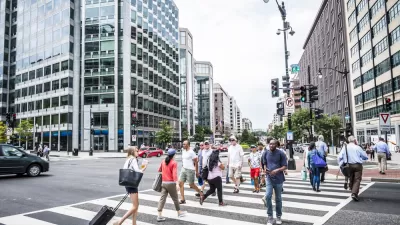Suzette Hackney, a former Detroit Free Press journalist, expresses her concern about who is getting left out of Detroit's comeback story.
Leaving Detroit in 2013 offered "a chance to step back and observe with a journalistic eye the city’s transformation," explains Hackney—"a luxury often not possible when I was reporting on murders and the city's budget crisis every day."
That perspective leaves Hackney wondering about a looming question: "Is there room for low income residents to benefit from the dazzling reinvention of their city?"
After citing some of the data that shows the city's impoverished population and acknowledging the city's ongoing bankruptcy concerns, Hackney goes on to identify how Detroit's comeback came to be story of privilege:
National media outlets have been criticized for parachuting into the city, and only showing white Detroit. But if we are painfully honest with ourselves, the growing majority of startups, businesses and restaurants attracting such broad attention, are mostly white owned. Dispatches from Detroit as the latest urban comeback story don’t often include scenes from deep inside the city’s distressed neighborhoods. Such ruin porn, as it’s called, would defeat the purpose.
And:
But it’s a tough sell to convince editors, or even bankruptcy attorneys, that tales from the ’hood—the down and out African-American hood—are important to a restructuring plan or vital to honest coverage, particularly when the stories coming out of Detroit for years were all about crime and blight, political corruption, a failing auto industry, racial disharmony, a failing school system, poverty and just straight-up hopelessness. There’s a woeful-Detroit fatigue, and understandably so. We’re tired of the bad news. We want to see Detroit’s revival, and live to talk about it.
FULL STORY: Is There Room for Black People in the New Detroit?

Alabama: Trump Terminates Settlements for Black Communities Harmed By Raw Sewage
Trump deemed the landmark civil rights agreement “illegal DEI and environmental justice policy.”

Planetizen Federal Action Tracker
A weekly monitor of how Trump’s orders and actions are impacting planners and planning in America.

The 120 Year Old Tiny Home Villages That Sheltered San Francisco’s Earthquake Refugees
More than a century ago, San Francisco mobilized to house thousands of residents displaced by the 1906 earthquake. Could their strategy offer a model for the present?

Study: How Urban Parks Can Support Biodiversity
Conservation and recreation can go hand in hand in urban green spaces designed to serve both humans and local wildlife.

High-Speed Rail Tracker
Smart Cities Dive follows high-speed rail developments around the country

Ken Jennings Launches Transit Web Series
The Jeopardy champ wants you to ride public transit.
Urban Design for Planners 1: Software Tools
This six-course series explores essential urban design concepts using open source software and equips planners with the tools they need to participate fully in the urban design process.
Planning for Universal Design
Learn the tools for implementing Universal Design in planning regulations.
Clanton & Associates, Inc.
Jessamine County Fiscal Court
Institute for Housing and Urban Development Studies (IHS)
City of Grandview
Harvard GSD Executive Education
Toledo-Lucas County Plan Commissions
Salt Lake City
NYU Wagner Graduate School of Public Service




























